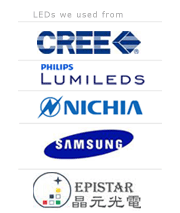News
Search
Popular search



In this Houzz blog entry, interior designer Michelle Jeresek shares insights on how to light up kitchens using ecofriendly luminaires.
Smart kitchen lighting goes beyond replacing your old bulbs with more efficient models. Reducing energy consumed by lighting can be easy with a kitchen that’s designed for flexibility and makes use of the most energy-efficient lighting of all: natural daylight.
Look to your light switches as an important place to save money and energy, because turning unnecessary lights off or dimming them reduces energy consumption.
Dimmers provide flexibility and conserve energy. Dimming a light by half can cut electric use by 40 percent. Dimmers also extend the life of the bulb. Note: Dimmers don’t work with most fluorescent bulbs.
Multiple switches provide flexibility, allowing you to turn on just the right amount of lights. At a minimum, your general overhead lighting, accent pendants and undercabinet lighting should all be switched separately. When planning your switches, also consider how you might use lighting for different times of day and various occasions.
This kitchen is a top-notch illustration of good lighting and clearly illustrates the three types of interior lighting (Please see link below for photos):
Ambient: In this kitchen, the recessed can lights and the barely detectable uplighting on top of the upper cabinets are the ambient (or general) light source, which provides an area with overall illumination.
Task: Here the pendants over the table and the undercabinet lighting are the task lighting, which helps you perform specific tasks, such as preparing and cooking food.
Accent: This kitchen’s pendants also act as accent lighting, which creates visual interest.
This kitchen also keenly incorporates natural daylight with a skylight and a bank of windows at counter level. (Please see link below for photos.)
Natural Daylight
Reduce your need for artificial light and take advantage of natural daylight as a cost-free way to illuminate your kitchen during daytime hours. Besides, who doesn’t love a gorgeous light-filled space?
North- and south-facing windows are optimal for bringing in natural light. Northern light is softer and unaccompanied by glare or direct light (which brings with it heat). South-facing windows can introduce direct light, but that light is easy to control with short exterior overhangs designed to keep direct light out during hotter months. The daylight (and associated heat gain) from east- and west-facing windows is the toughest to control but can be counteracted with exterior vegetation or window coverings. (Please see link below for photos)
Natural daylight without upper cabinets. One of my favorite kitchen design moves is the elimination of upper cabinets in exchange for more windows. I avoid conventional upper cabinets because the space below them — even with undercabinet lighting — is often dark and less usable. Without upper cabinets in this kitchen, the full depth of the perimeter counters is more usable and the work surfaces are bathed in natural light during the day, meaning light fixtures can be comfortably kept off. (Please see link below for photos)
Natural daylight with upper cabinets. Smart designs, like this kitchen, can avoid the shortcomings of upper cabinets. This kitchen employs light-colored, reflective surfaces and an undercabinet window to keep work areas bright during the day. (Please see link below for photos)
Natural daylight with skylights. Introducing natural light doesn’t require trading in wall space for windows. Look (up) to skylights for a great way to deliver daylight to your kitchen work surfaces. This kitchen has no lights turned on, and yet the island is beautifully awash with bright natural light. (Please see link below for photos.)
Natural daylight from remote sources. This kitchen doesn’t have access to windows or a skylight, but it’s light filled thanks to a clever design that borrows daylight from a second story. (Please see link below for photos.)
Surfaces, especially countertops, that are light colored and reflective will make the most use of the light cast upon them. (Please see link below for photos.)
Three types of bulbs, or lamps, as they’re known in the lighting industry, are most common in current kitchen design:
Incandescent: Thank you, Thomas Edison, for allowing us to relegate candles to birthday cakes and romantic evenings, instead of having to use them for our primary lighting. Although incandescents were the lighting standard for decades, the lighting industry is quickly moving away from inefficient incandescent bulbs — even making some bulbs illegal. And for good reason: a 100-watt bulb is 2.1 percent efficient, producing about 2 watts of light and 98 watts of heat.
Compact fluorescent: CFLs have been everyone’s go-to efficient bulb but, much like eight-tracks or compact discs, their time with us may be short. While these bulbs use about a third or less of the energy that an incandescent uses, CFLs are difficult to dim, contain mercury (though some mercury-free options are available) and are being outperformed by LEDs.
LED: Light-emitting diode lamps and fixtures should be your new go-to for efficient artificial light, with increased efficiency over CFLs and a life span that’s six times longer. Prices have been plummeting as demand has risen.
The Federal Trade Commission is making it easier for consumers to compare lightbulbs by requiring labels on bulb packages that are similar to nutrition labeling. The straightforward label provides everything you need to know, including brightness (lumens), estimated operating costs, expected life span and light appearance (color temperature).
With newer lightbulbs designed to use less energy, wattage is no longer an effective way to gauge a bulb’s brightness, so the industry is shifting from watts to lumens. This chart provides an easy guide to lumens based on equivalent incandescent bulb wattage.
Color temperature is how light appears to us — warm, cool or natural. You can dramatically alter the character of a space with a lamp’s color temperature. Look for color temperature, called “light appearance” on the new lighting fact labels.



